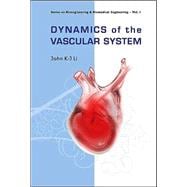
What is included with this book?
| Preface | vii | ||||
| 1. Historical Backgrounds and Book Contents | |||||
|
1 | (6) | |||
|
7 | (1) | |||
|
8 | (1) | |||
|
9 | (5) | |||
| 2. Vascular Biology, Structure and Function | |||||
|
14 | (6) | |||
|
14 | (1) | |||
|
14 | (4) | |||
|
18 | (1) | |||
|
18 | (1) | |||
|
19 | (1) | |||
|
20 | (10) | |||
|
20 | (5) | |||
|
25 | (5) | |||
|
30 | (5) | |||
|
30 | (1) | |||
|
31 | (2) | |||
|
33 | (2) | |||
|
35 | (6) | |||
|
36 | (1) | |||
|
37 | (2) | |||
|
39 | (2) | |||
| 3. Physical Concepts and Basic Fluid Mechanics | |||||
|
41 | (13) | |||
|
41 | (2) | |||
|
43 | (1) | |||
|
44 | (2) | |||
|
46 | (8) | |||
|
54 | (9) | |||
|
54 | (1) | |||
|
55 | (3) | |||
|
58 | (2) | |||
|
60 | (3) | |||
|
60 | (1) | |||
|
61 | (1) | |||
|
61 | (2) | |||
|
63 | (13) | |||
|
63 | (4) | |||
|
67 | (1) | |||
|
68 | (1) | |||
|
69 | (1) | |||
|
69 | (3) | |||
|
72 | (4) | |||
|
72 | (1) | |||
|
73 | (1) | |||
|
73 | (2) | |||
|
75 | (1) | |||
| 4. Hemodynamics of Large Arteries | |||||
|
76 | (13) | |||
|
76 | (2) | |||
|
78 | (3) | |||
|
81 | (1) | |||
|
82 | (1) | |||
|
83 | (4) | |||
|
87 | (2) | |||
|
89 | (10) | |||
|
89 | (5) | |||
|
94 | (5) | |||
|
99 | (11) | |||
|
99 | (1) | |||
|
100 | (3) | |||
|
103 | (4) | |||
|
107 | (3) | |||
|
110 | (10) | |||
|
110 | (6) | |||
|
116 | (2) | |||
|
118 | (1) | |||
|
119 | (1) | |||
|
120 | (22) | |||
|
120 | (4) | |||
|
124 | (6) | |||
|
130 | (6) | |||
|
136 | (6) | |||
| 5. Vascular Branching | |||||
|
142 | (6) | |||
|
142 | (2) | |||
|
144 | (2) | |||
|
146 | (2) | |||
|
148 | (9) | |||
|
148 | (6) | |||
|
154 | (3) | |||
|
157 | (9) | |||
|
157 | (3) | |||
|
160 | (4) | |||
|
164 | (2) | |||
|
166 | (6) | |||
|
166 | (4) | |||
|
170 | (2) | |||
| 6. The Venous System | |||||
|
172 | (4) | |||
|
172 | (2) | |||
|
174 | (1) | |||
|
175 | (1) | |||
|
176 | (6) | |||
|
176 | (2) | |||
|
178 | (2) | |||
|
180 | (2) | |||
|
182 | (10) | |||
|
182 | (2) | |||
|
184 | (4) | |||
|
188 | (4) | |||
| 7. The Microcirculation | |||||
|
192 | (8) | |||
|
192 | (4) | |||
|
196 | (4) | |||
|
200 | (6) | |||
|
200 | (2) | |||
|
202 | (4) | |||
|
206 | (8) | |||
|
206 | (2) | |||
|
208 | (2) | |||
|
210 | (4) | |||
| 8. Hemodynamic Measurements and Dynamics of the Assisted Circulation | |||||
|
214 | (20) | |||
|
214 | (8) | |||
|
214 | (3) | |||
|
217 | (5) | |||
|
222 | (4) | |||
|
222 | (2) | |||
|
224 | (1) | |||
|
225 | (1) | |||
|
226 | (7) | |||
|
226 | (1) | |||
|
227 | (2) | |||
|
229 | (4) | |||
|
233 | (1) | |||
|
234 | (11) | |||
|
234 | (11) | |||
| Bibliography | 245 | (8) | |||
| Index | 253 |
The New copy of this book will include any supplemental materials advertised. Please check the title of the book to determine if it should include any access cards, study guides, lab manuals, CDs, etc.
The Used, Rental and eBook copies of this book are not guaranteed to include any supplemental materials. Typically, only the book itself is included. This is true even if the title states it includes any access cards, study guides, lab manuals, CDs, etc.